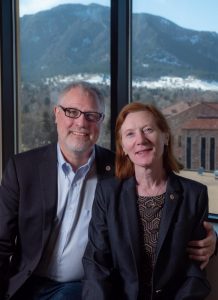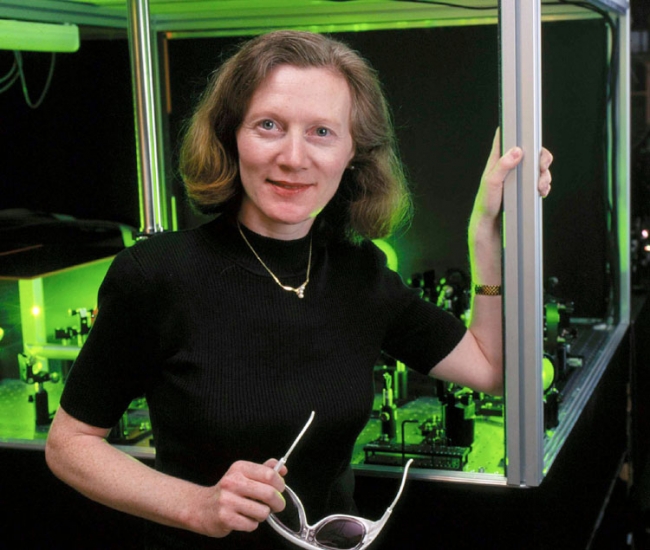Podcast: Play in new window | Download
Subscribe: Spotify | Email | RSS | More

Welcome to the inaugural episode of the President’s Innovation Podcast, a special CU on the Air series. Host Emily Davies speaks with distinguished professor Margaret Murnane, a fellow at JILA, which is a joint institute of the University of Colorado Boulder and the National Institute of Standards and Technology. Dr. Murnane is also a faculty member in the department of physics and electrical and computer engineering at CU Boulder, and has earned numerous prestigious awards for her work in ultrafast laser and x-ray science.
- Margaret Murnane was attracted to the field of ultrafast x-ray and laser science because most people had no idea if the technology would be useful and for what uses might pan out.
- She was awarded the prestigious John D. and Catherine T. MacArthur genius fellowship in 2000, possibly for the discovery of how to very easily make a short laser pulse that was fast enough to capture the dance of electrons in a material or a molecular reaction.
- The MacArthur ‘genius’ Fellowship enabled Murnane and husband Dr. Henry Kapteyn, also a JILA professor, to establish their lab at CU Boulder.
- The two were only the second couple to win the Benjamin Franklin Medal in physics (theirs in 2021) along with Marie and Pierre Curry. It was also awarded to Albert Einstein.
- The honor possibly stemmed – with their students and collaborators – their ability to discover how to control x-ray light at a super precise level, and the same in the case of visible lasers.
- A leading semiconductor research and development facility, IMEC, is now using their technology to develop and integrate the next generation materials into nano-devices. The applications range from computer chips or chips for cellphones to aerospace technology.
- A special treat for Murnane was earning the 2018 Science Foundation Ireland St. Patrick’s Day Science Medal for academia, through which she, her husband and mother were able Irish dignitaries – her role models.
- Murnane serves as the director of STROBE, a National Science Foundation Science and Technology Center, which brings together teams from different science and technology backgrounds to develop the microscope of tomorrow.
- Just what is the vortex beam of light and what are its applications?
- X-ray lasers could make very powerful microscopes to look through materials that are opaque to visible light and catch electrons in action.
- The lasers have the ability to modernize technology for clearer scans, from the dentist x-raying your teeth to earlier detection of cancer.
- Murnane discusses growing up in Ireland, and the role her father played in her career path.
- Why CU and Colorado? She and her husband love traveling the state and look forward to doing a lot more of it this summer.
Resources
- Margaret Murnane
- Margaret Murnane (JILA)
- Henry Kapteyn
- Buff Innovator Insights Podcast
- Keeping up with the Curies: Laser scientists win prestigious physics award
- Laser Researcher wins $500,000 MacArthur Foundation Fellowship
- STROBE National Science Foundation Science and Technology Center
- Professor Murnane Wins Highest Medal from the Optical Society

